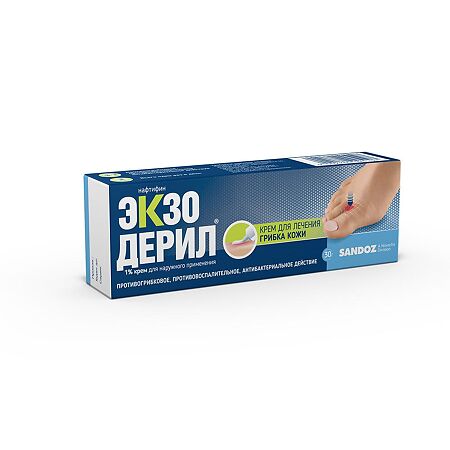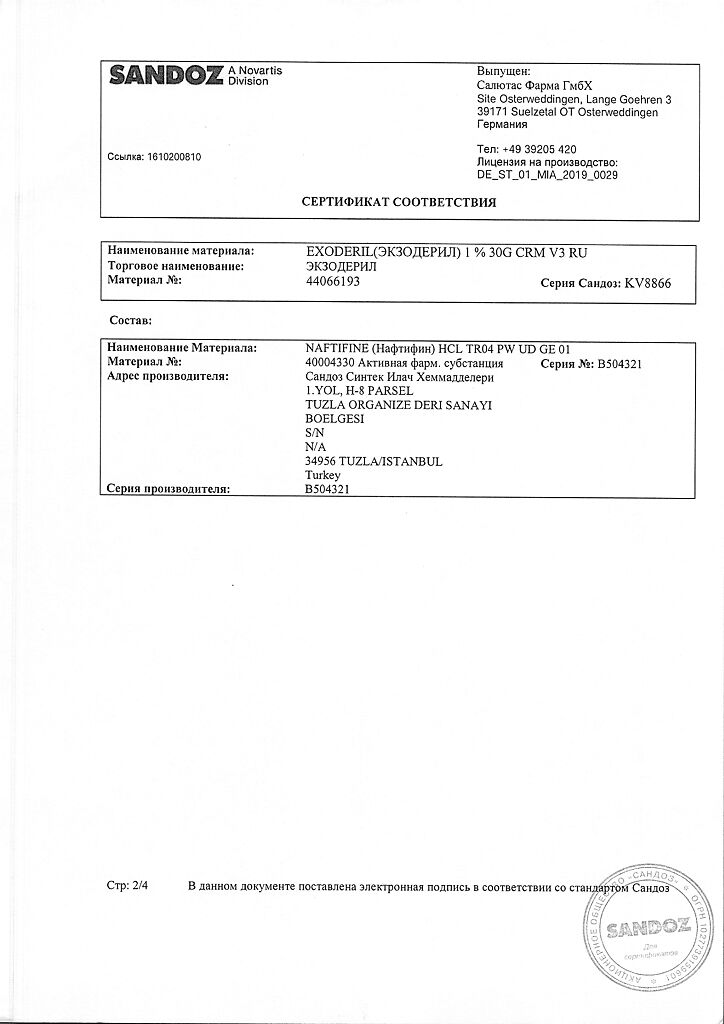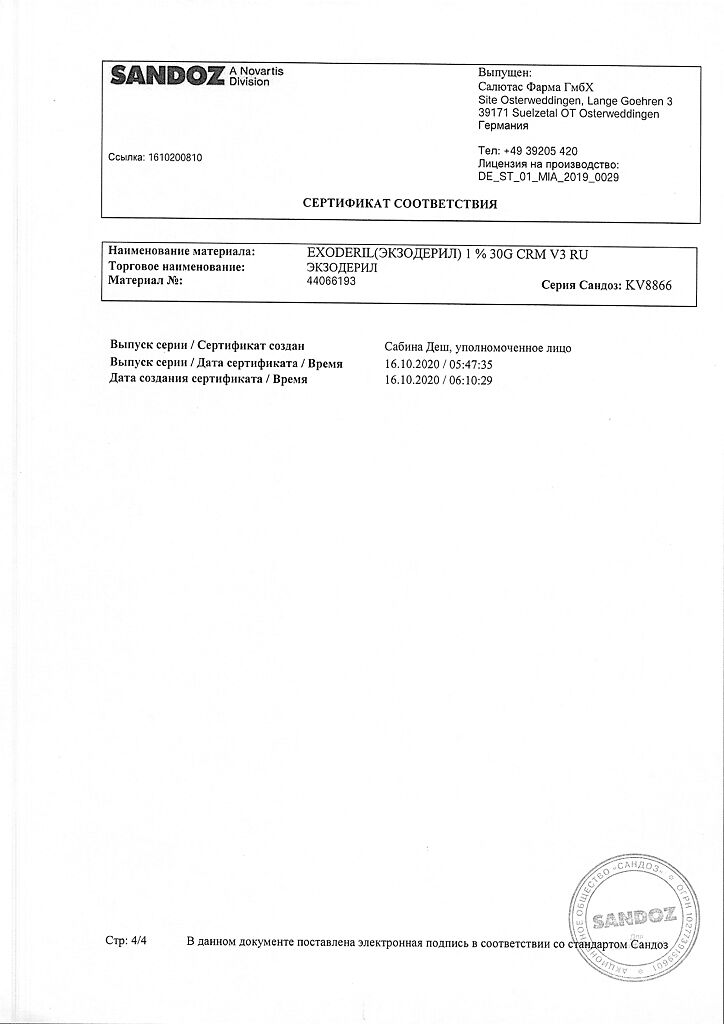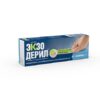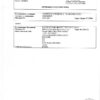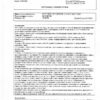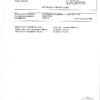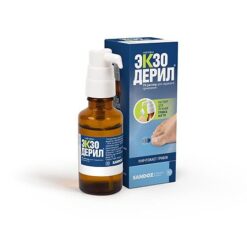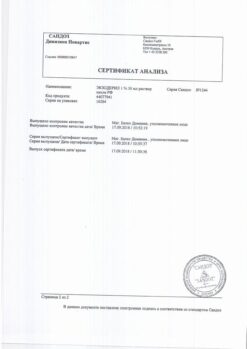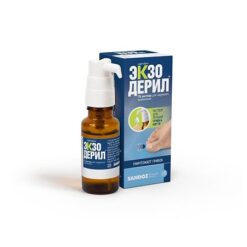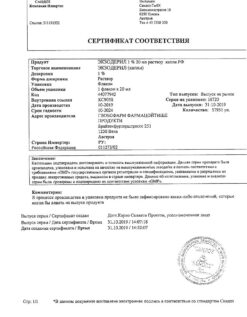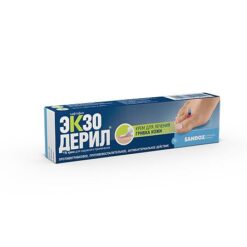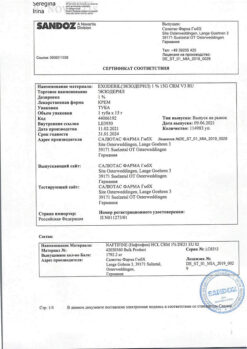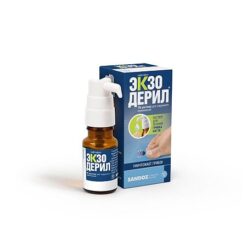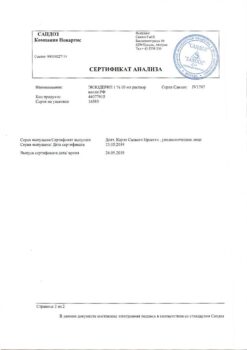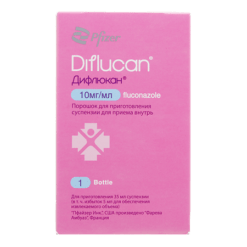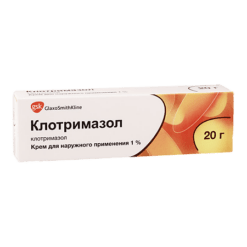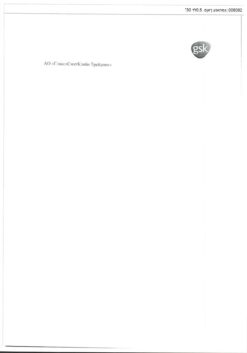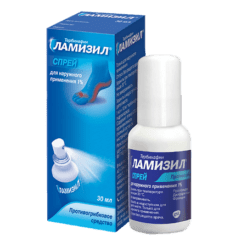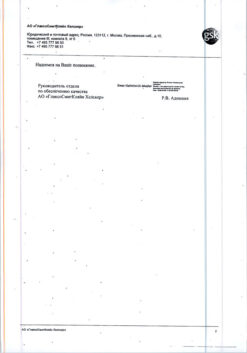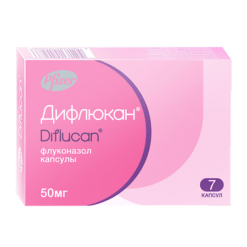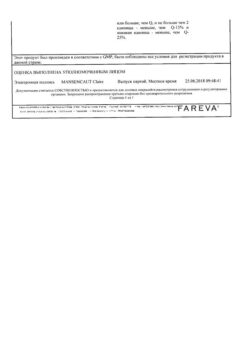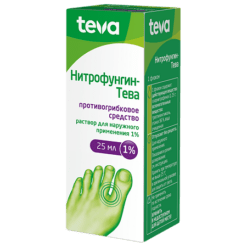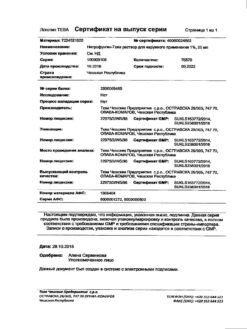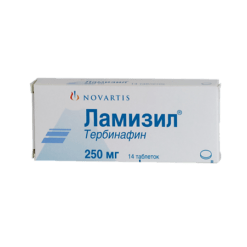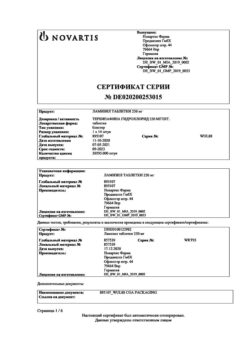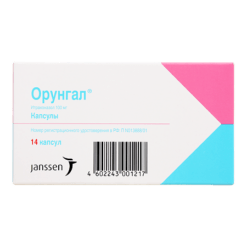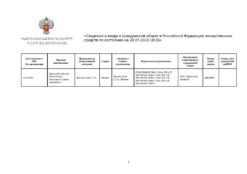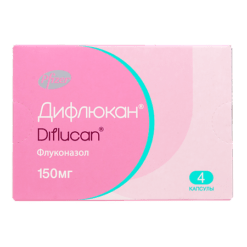No products in the cart.
Description
Antifungal agent
ATX code: D01AE22
Pharmacodynamics
Naftifine is a topical antifungal agent belonging to the class of allilamines. Its mechanism of action is related to inhibition of squalene-2,3-epoxidase, which results in reduction of formation of ergosterol, a component of the cell wall of the fungus. It is active against dermatophytes such as Trichophyton, Epidermophyton and Microsporum, molds (Aspergillus spp.), yeasts (Candida spp., Pityrosporum) and other fungi (such as Sporothrix schenckii).
With respect to dermatophytes and aspergillus naphthifin acts fungicidal. Against yeast fungi the drug has fungicidal or fungistatic activity depending on the strain of the microorganism. It has antibacterial activity against Gram-positive and Gram-negative microorganisms that can cause secondary bacterial infections. It has anti-inflammatory effect, which contributes to the rapid disappearance of inflammatory symptoms, especially itching. Pharmacokinetics
When applied externally, it penetrates well into various layers of the skin, creating stable antifungal concentrations in its various layers. After application on the skin less than 6% of naphthifin is absorbed systemically. Absorbed amount is partially metabolized and excreted by kidneys and intestine. Half-life period of the drug is 2 – 3 days.
Indications
Indications
– fungal infections of the skin and skin folds (tinea corporis, tinea inguinalis), incl. interdigital mycoses (tinea manum, tinea pedum);
– fungal infections of nails (onychomycosis);
– skin candidiasis;
– pityriasis versicolor;
– ringworm (with or without accompanying itching).
Pharmacological effect
Pharmacological effect
antifungal agent
ATX code: D01AE22
Pharmacodynamics
Naftifine is an antifungal agent for external use, belonging to the class of allylamines. The mechanism of action is associated with inhibition of squalene-2,3-epoxidase, which leads to a decrease in the formation of ergosterol, which is part of the cell wall of the fungus. Active against dermatophytes such as Trichophyton, Epidermophyton and Microsporum, molds (Aspergillus spp.), yeasts (Candida spp., Pityrosporum) and other fungi (for example, Sporothrix schenckii).
Naftifine has a fungicidal effect against dermatophytes and aspergillus. Against yeast fungi, the drug exhibits fungicidal or fungistatic activity depending on the strain of the microorganism. It has antibacterial activity against gram-positive and gram-negative microorganisms that can cause secondary bacterial infections. It has an anti-inflammatory effect, which contributes to the rapid disappearance of symptoms of inflammation, especially itching. Pharmacokinetics
When used externally, it penetrates well into various layers of the skin, creating stable antifungal concentrations in its various layers. After application to the skin, less than 6% of naftifine is subject to systemic absorption. The absorbed amount is partially metabolized and excreted by the kidneys and intestines. The half-life of the drug is 2 – 3 days.
Special instructions
Special instructions
Precautions for use:
Exoderil® is not intended for use in ophthalmology. The drug should not come into contact with the eyes.
Effect on the ability to drive vehicles and other mechanisms: Exoderil® does not have a negative effect on the ability to drive vehicles and perform other activities that require concentration and speed of psychomotor reactions.
Active ingredient
Active ingredient
Naftifin
Composition
Composition
1 g of cream contains:
active substance:
naftifine hydrochloride – 10.0 mg.
excipients:
sodium hydroxide – 1.2 mg,
benzyl alcohol – 10.0 mg,
sorbitan stearate – 19.0 mg,
cetyl palmitate – 20.0 mg,
cetyl alcohol – 40.0 mg,
stearyl alcohol – 40.0 mg,
polysorbate 60 – 61.0 mg,
isopropyl myristate – 80.0 mg,
purified water – 718.8 mg.
Pregnancy
Pregnancy
The use of Exoderil® during pregnancy and lactation is contraindicated (safety and effectiveness have not been determined).
Contraindications
Contraindications
Hypersensitivity to naftifine, benzyl alcohol or other components of the drug; pregnancy and lactation (safety and effectiveness of use have not been determined).
With caution
Children’s age (experience of clinical use is limited).
Side Effects
Side Effects
In some cases, local reactions may be observed: dry skin, skin hyperemia and burning.
Side effects are reversible and do not require discontinuation of treatment.
Interaction
Interaction
There were no drug interactions between Exoderil® and other drugs.
Overdose
Overdose
No cases of overdose have been reported.
Storage conditions
Storage conditions
At a temperature not exceeding 30 °C
Shelf life
Shelf life
5 years
Manufacturer
Manufacturer
Salutas Pharma GmbH, Germany
Additional information
| Shelf life | 5 years |
|---|---|
| Conditions of storage | At a temperature not exceeding 30 °C |
| Manufacturer | Salutas Pharma GmbH, Germany |
| Medication form | exterior cream |
| Brand | Salutas Pharma GmbH |
Other forms…
Related products
Buy Exoderil, cream 1% 30 g with delivery to USA, UK, Europe and over 120 other countries.

